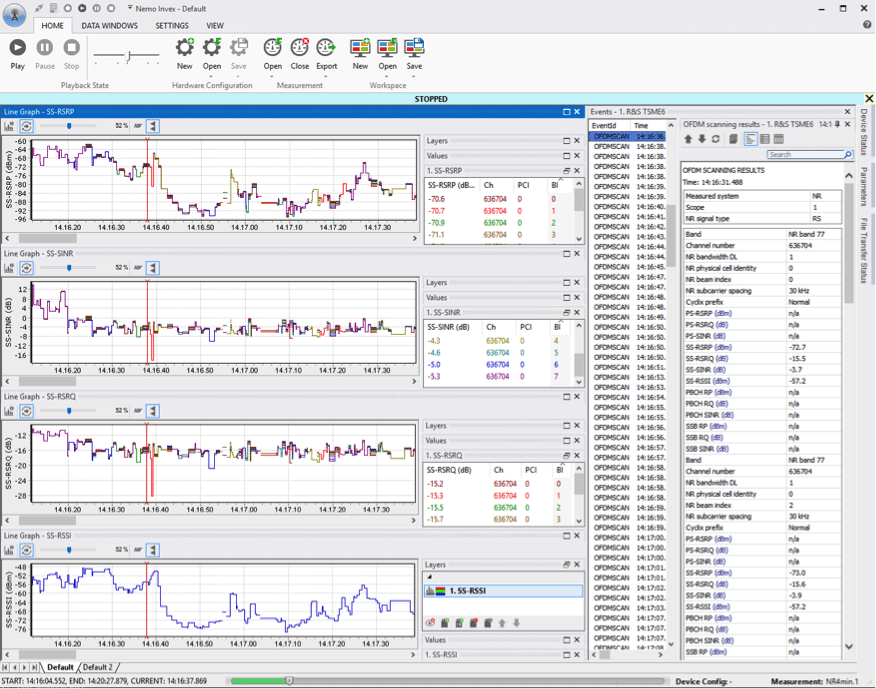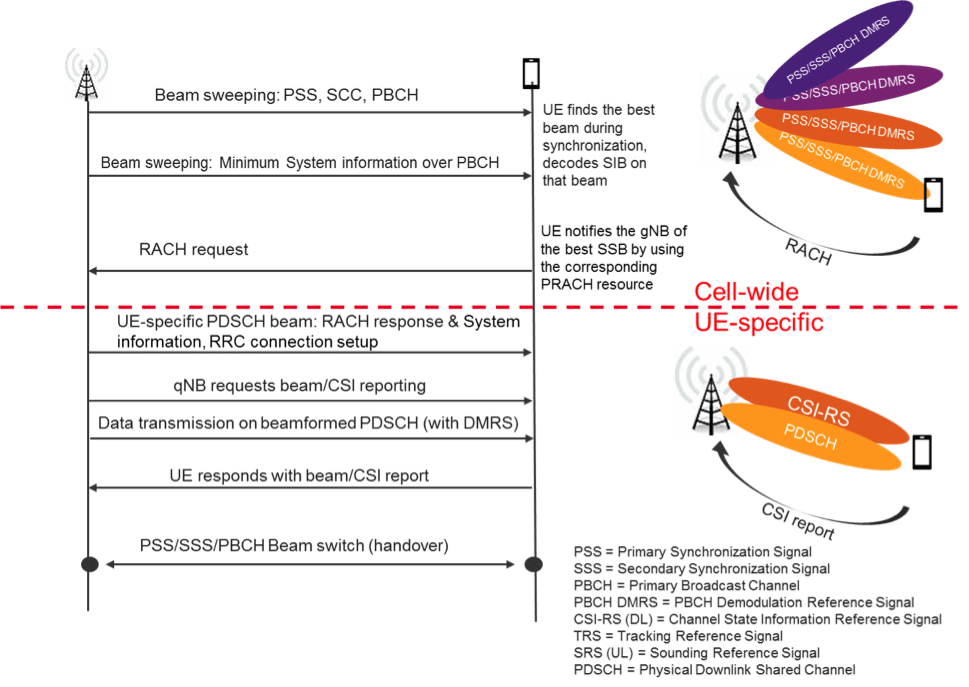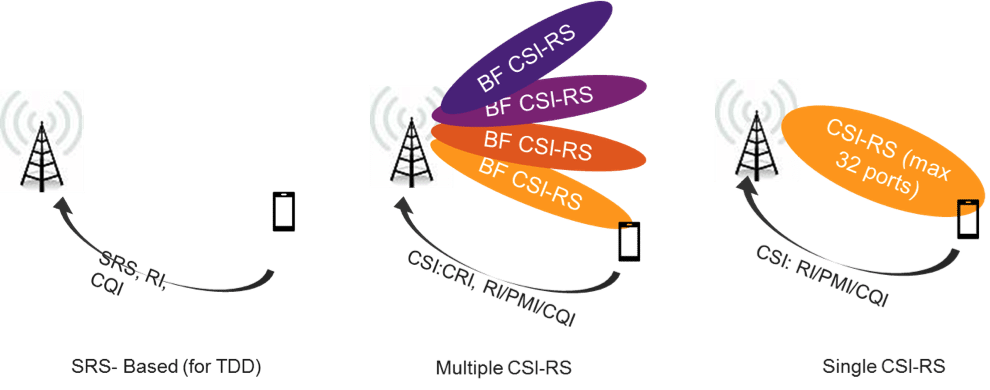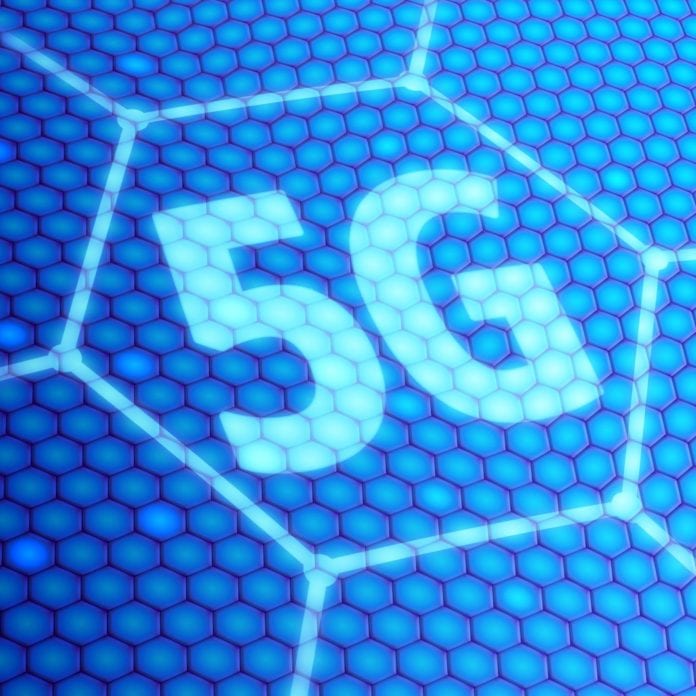Both scanners and test UEs will be available for field testing in 5G. In legacy technologies, scanner was best suited for coverage measurements because it can measure all cells from all networks in one go. UE is always limited to one operator and does not necessarily measure all technologies or even all carriers as it is bounded by the neighbor list definitions in the network. This is valid reasoning also in 5G. Scanner will be able to measure the SSB beams, which is the basic coverage measure of 5G NR network.

However, there are a few differences compared to legacy technologies in using scanners on 5G. Scanners can read the full system information in UMTS and LTE networks, from where scanner can read global cell id, MNC, MCC, and other useful parameterization of the network. In 5G only the bare minimum system information is broadcasted in common PBCH channel that is part of the SSB block. This is to avoid common, always on cell-level transfer and to minimize the energy consumption of the network. Rest of the system information is sent to the UE on-demand at the time of connection established. This means that the 5G scanner cannot read the full system information from the cells it is scanning.
Another thing to consider is the difference of the scanner antennas to the real devices. This has been a consideration already in LTE along with MIMO antennas and will be more so in 5G. With the first CPE devices being introduced, coarse beamforming is being implemented also in the device end. Hence the antenna gain, as well as the MIMO performance will become even more dependent on the devices at hand. However, there will be always a need for device agnostic coverage measurements that focus on the performance of the network, and scanner continues to provide the best solution for that use case.
Figure 2 illustrates the steps of UE accessing the network in 5G NR. SSB beams (PSS, SSS, and PBCH) are the only signals common to the cell and always in the air in 5G. CSI-RS is an UE specific reference signal, and PDSCH is the traffic channel for downlink, both beamformed. When the UE is moving in the cell, the UE-specific beams are adjusted to follow the UE based on the CSI feedback collected from the radio channel, whereas the SSB beams remain static, and UE performs beam switching between the SSB beams, similarly as handovers between cells are performed in the legacy technologies. It should be noted that initial implementations will not necessarily utilize all the beamforming features as defined here. For example, the UE-specific traffic channels may be initially transmitted using the same beam (precoding) as the reference beams.
Going back on what is possible to measure with scanner and what with UE, scanner can see only the SSB beams (cell-wide part of Figure 2), whereas all the channels, signals and beams of Figure 3 are visible for the test UE.

The channel State Information (CSI) measurements can be done with few different ways depending on the network configuration and TDD/FDD mode, as illustrated in Figure 3. The CSI information includes Channel Quality Indicate (CQI), Rank Indicator (RI), codebook index (precoding weights as suggested by UE), and CRI, the ID of the strongest CSI-RS beam as seen by the UE, in the case of multiple CSI-RS beams. The FDD cases provide more visibility from the field measurement perspective, as the CSI information is measured by the UE from CSI-RS and this info will then be available also in the diagnostics data of the test UEs.

Summary
5G brings new technological features, that change the landscape of Scanner based and UE based field measurements. Still they both fill a need in the eyes of the operators. Ultimately the UE will be the one giving detailed KPI’s needed to understand RAN functionality and quality and capacity of the cell coverage. At Keysight Nemo Wireless Network Solutions we have hands-on experience on LTE scanner and LTE UE field measurements – with a full portfolio of Nemo branded measurement and analytics solutions for 5G.
About the author. Matti Passoja, Director, Solution marketing at Keysight Wireless Network Solutions. Matti is responsible for solution marketing of 5G and IoT at Keysight Wireless Network Solutions. This includes sales/channel enablement, outbound marketing, Go To Market planning. Further Matti has 10+ year experience in R&D and product management of RAN data collection and analytics solutions.


